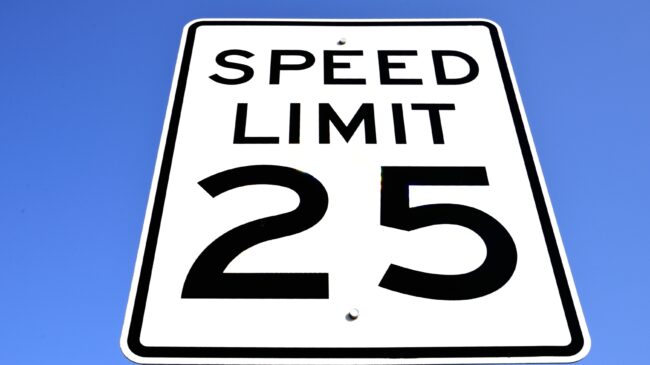Many cities are permanently reducing posted speed limits on some streets to 20 miles per hour. Speed limits on some busy, major urban arterials are also being reduced. In many cases, lowering these speed limits is part of the Vision Zero campaign aimed at well-intentioned goals of reducing traffic fatalities and injuries.
Many of these policies aim to oppose the 85th percentile principle of setting speed limits, which is how speed limits have been set in the past. The Institute of Transportation Engineers defines this as “the speed at or below which 85 percent of vehicles travel.” In other words, the speed limit on these roads would be set at a free-flowing traffic speed at which only around 15 percent of typical drivers would exceed and violate. Of course, speed limits can and should be revisited and restudied as safety data is compiled and traffic patterns or technology change.
Transportation engineers agree that posted speed limits for arterials, which are the backbone of many urban road networks and designed to quickly transport people through large areas, need to be set at, or close to, the 85th percentile speed. The National Motorists Association reports:
“According to a pamphlet produced by the Washington State Department of Transportation relating to speed limits, ‘realistic’ speed limits should invite public compliance by conforming to the behavior of the most drivers. This would allow the police to easily separate the serious violators from the reasonable majority.”
It’s also worth noting that slower speeds on roads are not necessarily safer. The biggest factor in many traffic accidents is the difference in speeds between different vehicles on that road, according to a 1996 Institute of Transportation Engineers study cited by the National Motorists Association:
“According to an Institute of Transportation Engineers study, those driving 10 mph slower than the prevailing speed are six times as likely to be involved in an accident. That means that if the average speed on an Interstate is 70 mph, the person traveling at 60 mph is far more likely to be involved in an accident than someone going 70 or even 75 mph.”
They also cite research showing that a majority of drivers travel at speeds they feel are safe for them, regardless of the posted speed limit:
For example, an 18-month study following an increase in the posted speed limit along the New York Thruway from 55 to 65 mph, determined that the average speed of traffic, 68 mph, remained the same. A national study conducted by the Federal Highway Administration also concluded that raising or lowering the speed limit had practically no effect on actual travel speeds.
Increasing a road’s speed limit to the actual speed that vehicles are traveling can make roadways safer. When the majority of traffic is traveling at the same speed, traffic flow improves and there are fewer accidents. Speed alone is rarely the cause of highway accidents and, as noted above, major differences in speeds of vehicles on the same roadway are often a major problem. The Michigan State Patrol, cited by the National Motorists Association, noted the problems that different speeds cause:
“According to a speed-limit brochure published in conjunction with the Michigan State Patrol, inappropriately established speed limits cause drivers to take all traffic signals less seriously. The brochure also points out that unrealistic speed limits create two groups of drivers. Those that try to obey the limit and those that drive at a speed they feel is safe and reasonable. This causes dangerous differences in speed.”
Transportation officials should recognize that speed limits need to be customized to specific road types and travel patterns. Local streets and roads certainly need to ensure that they take all pedestrians, school zones, cyclists, and other factors into consideration. On local streets, making intelligent infrastructure decisions and changes that lower designed speeds to best serve all groups safely should be a primary goal.
However, busy car-focused urban arterials need to be set at the 85th percentile to best serve public safety and mobility. Reasonable speed limits help traffic flow at a safer, more uniform pace. But a one-speed-suits-all approach that calls for lowering speed limits across the board would be misguided.
Reason’s Debatable Ideas series examining transportation and infrastructure issues is available here.

